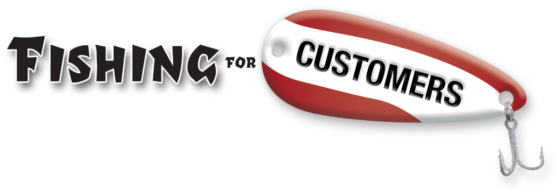The boss has just found out that companies which specialize in infomercial marketing will charge tens of thousands of dollars to produce your program.
He wants to know why you can’t do it “in house.”
Can’t you just put a talent in front of a camera and let him persuade those late night visitors to buy?
DIY Infomercial?
I wouldn’t.
Too many dollars would stay on the table.
In addition to the obvious differences in production quality that an infomercial specialist brings to the table, there is the difference in strategy. The pros know you can’t treat all potential customers alike.
You see, some people want you to just cut to the bottom line and tell them what your product will do for them.
Some want to read the fine print.
Some want to know if other people have successfully used your product to solve their problems.
And then there’s the group that wants to know a whole lot more about your company before they consider doing business with you.
The right thing to say to one is exactly the wrong thing to say to the others.
What’s an aspiring infomercial producer to do?
According to Dr. Richard Grant, you should make a specific appeal to each of the eight different Meyers-Briggs communication styles in our offers. He calls the process Inclusive Communication by design.
It only makes sense that if we talk to people about their concerns, in a style that makes them comfortable, and address the questions that are important to them, that we’ll persuade more of them to do business with us.
Here is my assessment of the approach we need to take with each of the Meyers-Briggs “types” for your new 30-minute infomercial.
E – needs a good verbal presentation. Cover the major points at a fast pace without too much detail.
I – needs time to reflect. Will buy, but not before deliberating.
S – begin with facts, and build to “big picture.”
N – begin with “big picture” and fill in the facts.
T – emphasize soundness, reliability, and statistics.
F – support with first-hand testimonials
J – no surprises. Appear to stay organized.
P – diplomatically remind that a decision must be made within certain time constraints
Here’s how I would organize a program.
In Practical Application
Minutes 1-3
Introduce the show, and summarize the next thirty minutes for the “Js”. Make the overall claims for the product quickly for the “Ns”. Then, for both the “Ns” and the “Ss,” start building your facts. For the “Ss,” build to your conclusion and restate the claims for the product.
Minutes 4-8
For the “Ts” support the claims with science. For the “Fs” bring in the testimonials. Keep it fun and fast paced for the “Es”. Explain the dependability of your staff/call center for the “Js” and the fun people will have interacting with them for “Es.” Remind the “Ps” that this special offer is only good during this program.
Make your first call to action.
Minutes 9-17
Repeat your overall claims in summary form for the “Ns.” Build your facts, and re-state your conclusions for the “Ss.” Amplify and expand on the science for the “Ts.” Refer the “Is” to your web site. Reassure the “Js” that everything you’ve promised will happen right on schedule with no surprises. Consider using recorded testimonials from other customers, and use them now for the “Fs.” Again, remind the “Ps” that this special offer is only good during this program.
Make your second call to action.
Minutes 18-29
Have the interviewer “put you on the ropes” and make you defend the claims for the “Ss” and the “Js.” Keep it logical for the “Ts” but light-hearted for the “Es.” Pull out the science in deeper detail, and discuss the manufacturing process for the “Js” and “Ns.”
Talk about the company, and your commitments to quality and customer satisfaction for the “Ns,” “Ss,” and “Is.” Consider a :40 second interview with one of the call center operators as entertainment for the “Es” and reassurance for the “Js.” Restate that your customers get exactly what they expect on the timetable you’ve committed.
Remind the “Ps” that it’s time to place an order, if they want to take advantage of this special offer.
Make your final call to action, and wrap up.
Cast a Wider Net
Each personality type is more comfortable with information presented in a particular style. Respecting those communications styles, satisfying each in succession, multiplies the bait when you’re fishing for customers.
Your Guide,
Chuck McKay
 Your Fishing for Customers guide, Chuck McKay, gets people to buy more of what you sell.
Your Fishing for Customers guide, Chuck McKay, gets people to buy more of what you sell.
Got questions about articulating your value, and making sure people know it? Drop Chuck a note at ChuckMcKay@ChuckMcKayOnLine.com. Or, you can call Chuck at 317-207-0028.
If you’re interested in learning more about persona-based marketing, I recommend Waiting for Your Cat to Bark by Bryan Eisenberg, Jeffrey Eisenberg, and Lisa T. Davis. They make simple what could be a confusing subject. That’s probably why the book hit all 4 bestseller lists: New York Times, Wall Street Journal, USA Today and BusinessWeek.



Chuck – really nice article.
Do you have an infomercial you like and can share that follows this format?
How would you modify this for a 1 minute or 3 minute video?
It would be great to see the above in action.
Thanks,
SAM
Sam, I can’t think of one off the top of my head, and I’m sorry to admit that I’m not willing to go searching to see what’s available for analysis.
Can anyone else recommend a specific infomercial that we, as a group, could disassemble and analyze?
Chuck